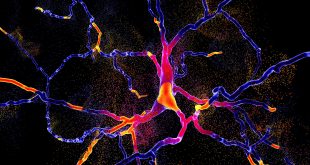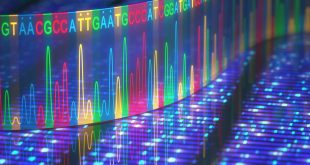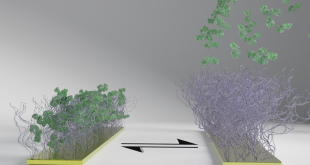University of Colorado Denver researchers are the first to 3D print a complex, porous lattice structure using liquid crystal elastomers (LCEs), creating devices that can mimic cartilage and other biological tissues.
Creating synthetic replacements which truly match the properties and behaviours of biological tissues hasn’t been easy. But University of Colorado Denver scientists, led by mechanical engineer professor Chris Yakacki, PhD, are the first to 3D print a complex, porous lattice structure using liquid crystal elastomers (LCEs), creating devices that can finally mimic cartilage and other biological tissues. The soft, multifunctional materials are known for their elasticity and extraordinary ability to dissipate high energy.

A complex, porous lattice structure is created using liquid crystal elastomers; the group 3D-printed several structures, including a prototype of a spinal fusion cage.
The Denver team, led by mechanical engineer professor Chris Yakacki, PhD, worked with scientists from the Southern University of Science and Technology in China; their findings were published in Advanced Materials. Yakacki began working with LCEs in 2012; in 2018, Yakacki received an NSF CAREER award to revolutionize the manufacturability of LCEs and several rounds of funding to develop them as a shock absorber for football helmets. Even then, he knew its applications could go further.
For their study, Yakacki and his team explored a 3D printing process called digital light processing (DLP). The team developed a honey-like LC resin that, when hit with ultraviolet light, cures – forming new bonds in a succession of thin photopolymer layers. The final cured resin forms a soft, strong, and compliant elastomer. When printed in lattice structures – levels of patterning akin to a honeycomb – it began to mimic cartilage.
The group printed several structures, including a tiny, detailed lotus flower and a prototype of a spinal fusion cage, creating the largest LCE device with the most detail. The combination of the resin and printing process also led to 12 times greater rate-dependence and up to 27 times greater strain-energy dissipation compared to those printed from a commercially available photocurable elastomer resin.
Going forward, the structures have several applications, like shock-absorbing football helmet foam or even small biomedical implants for toes. Yakacki is most excited about its possibilities in the spine. “The spine is full of challenges and it’s a hard problem to solve,” said Yakacki. “People have tried making synthetic spinal tissue discs and they haven’t done a good job of it. With 3D printing, and the high resolution we’ve gotten from it, you can match a person’s anatomy exactly. One day, we may be able to grow cells to fix the spine, but for now, we can take a step forward with the next generation of materials. That’s where we’d like to go.”
This work is supported by the U.S. Army Research Laboratory and U. S. Army Research Office, an NSF CAREER Award, and the Laboratory Directed Research and Development program at Sandia National Laboratories, for the U.S. Department of Energy’s National Nuclear Security Administration.
 BioLab Business Magazine Together, we reach farther into the Canadian Science community
BioLab Business Magazine Together, we reach farther into the Canadian Science community





